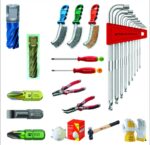Six-year agreements for major projects will create high-paid jobs
Allowing employers and unions to negotiate longer workplace deals for major resources and energy projects is an extremely important policy that would create thousands of high-paid jobs in Australia. Australian Resources and Energy Group, AMMA, has been calling for extended terms for employment arrangements applicable to new major projects, known as “greenfields agreements”, for well over a decade. “The Department of Industry shows there are more than 350 major resources and energy projects, in various stages of feasibility and commitment, in Australia’s investment pipeline,” Steve Knott AM, CEO of AMMA, said. “If all could be secured, the five-year employment projections would easily exceed 100,000 new jobs. “These jobs would range from trades and construction through to production roles – all paying salaries well in excess of $100,000 and for most, much more. “But in order to secure job-creating major project capital in Australia, and not see it lost to competing nations, we need to sharpen our game. “It makes no sense that the maximum term for major project greenfields agreements is currently four years, when the construction of large-scale resources and energy projects can often exceed that. “Even a small increase to six years would make a huge difference to the international investment community that determines which nations they will allocate billions of dollars of major project capital.” Mr Knott said six-year terms for major projects “should be uncontroversial” and encourages the Federal Opposition, the trade union movement and other stakeholders to be considered in their response. “Such agreements could have an inbuilt mechanism to ensure appropriate pay increases throughout the life of the project,” he said. AMMA also notes the following statement by the former Leader of the Opposition, Bill Shorten, just days before the 2019 Federal Election: We would look at companies undertaking these […]










